In today's fast-paced business environment, understanding the influence of stakeholders is more crucial than ever. A well-crafted stakeholder influence mapping report can provide valuable insights that shape decision-making and strategy formulation. By identifying key players and their impact on your organization, you can foster better relationships and enhance collaboration. Ready to dive deeper into the intricacies of stakeholder mapping? Keep reading to uncover essential strategies!
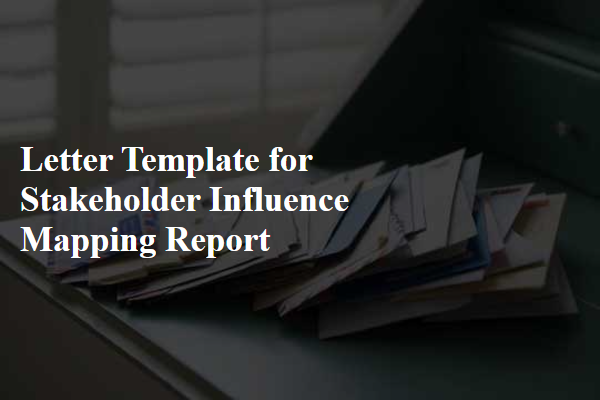
Stakeholder Identification
Stakeholder identification plays a crucial role in project management and organizational strategy. Stakeholders are individuals or groups who have a vested interest in the outcomes, processes, or success of a project or initiative. Key players may include internal stakeholders, such as employees and management teams, and external stakeholders, like customers, suppliers, regulatory bodies, and community representatives. Identifying stakeholders involves analyzing their influence and interest concerning the project. High-power, high-interest stakeholders often require close engagement and regular updates, while low-power, low-interest stakeholders may need less frequent communication. Proper stakeholder identification enables effective influence mapping, fostering collaboration, minimizing resistance, and ensuring project alignment with stakeholder expectations. Comprehensive identification also helps to uncover potential risks and opportunities related to stakeholder dynamics throughout the project lifecycle.
Influence and Interest Analysis
Influence and interest analysis is crucial for understanding stakeholder dynamics in project management. Stakeholders such as customers, suppliers, and regulatory bodies possess varying levels of influence and interest that can affect the trajectory of a project. For example, high-interest stakeholders like project sponsors tend to have significant influence due to their investment and decision-making authority. Conversely, low-interest stakeholders such as community members may have minimal direct impact on project outcomes but can mobilize support or opposition through public opinion or media. Mapping these stakeholder attributes on a grid helps identify strategies for engagement, ensuring that those with high importance are prioritized in communication and decision-making processes. Proper influence and interest analysis fosters collaboration, mitigates risks, and aligns stakeholder expectations with project goals.
Engagement Strategies
Engaging stakeholders effectively requires a well-planned strategy that acknowledges their varying levels of interest and influence within a project. The strategy may include techniques such as targeted communication plans tailored to specific stakeholder groups, including regular updates and feedback mechanisms, which ensure all parties remain informed and involved. Mapping tools like stakeholder matrices can visually represent relationships and influence scales, allowing project managers to prioritize engagement with key stakeholders such as government agencies, community leaders, and investors. Conducting interactive workshops can foster collaboration and address stakeholder concerns, while stakeholder surveys may provide valuable insights into perceptions and expectations. Understanding stakeholder motivations, whether financial, social, or environmental, is crucial for crafting messages that resonate, ensuring the project aligns with their interests and securing their ongoing support.
Communication Channels
Communication channels play a crucial role in stakeholder influence mapping for any organization. These channels can range from traditional media outlets, such as newspapers and television stations, to digital platforms, including websites, social media platforms like Facebook or LinkedIn, and email newsletters. Important to note is the significance of direct communication methods, such as face-to-face meetings, webinars, and stakeholder conferences, which facilitate meaningful dialogues. Understanding the effectiveness of each channel aids in the identification of key stakeholder groups, such as government entities, community organizations, and industry leaders, which can significantly impact project outcomes. Additionally, analyzing communication preferences and behaviors allows for the customization of messaging, enhancing the potential for engagement and collaboration across various entities involved.
Action Plan and Timeline
Stakeholder influence mapping identifies key individuals and groups whose support or opposition can significantly impact project outcomes. This report outlines an action plan and timeline for engaging stakeholders. Primary stakeholders include investors, government agencies, community leaders, and customers, each with unique interests and influence levels. Initial outreach will occur through targeted communication strategies in Q1 2024, followed by stakeholder analysis workshops in March, assessing influence vs. interest matrices. Regular updates scheduled for quarterly reviews will maintain engagement and foster transparency through 2024. The final phase involves measuring stakeholder feedback and adaptation of strategies to ensure alignment with project goals before project execution in Q3 2025.

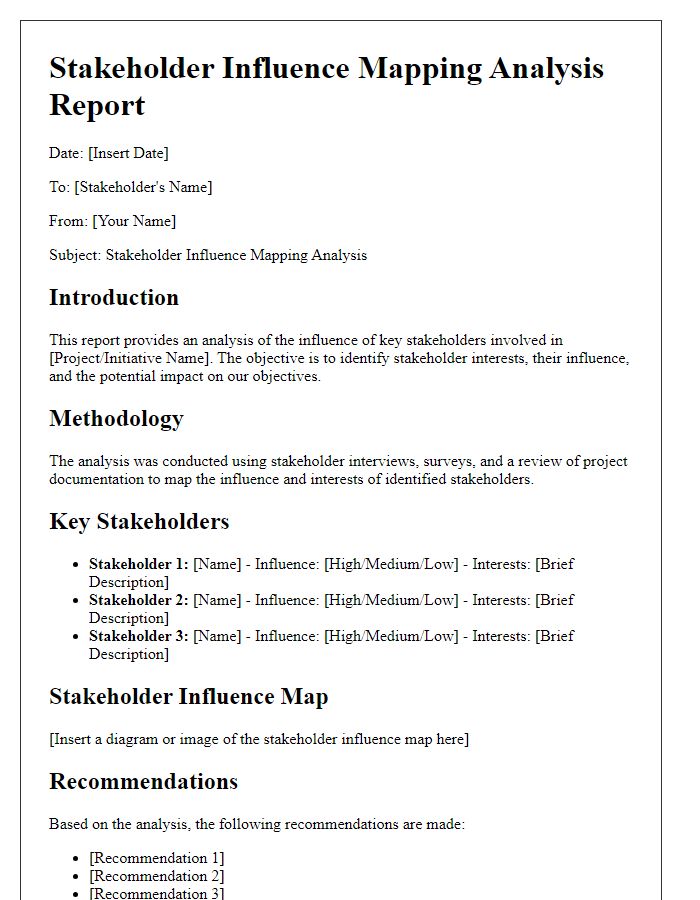
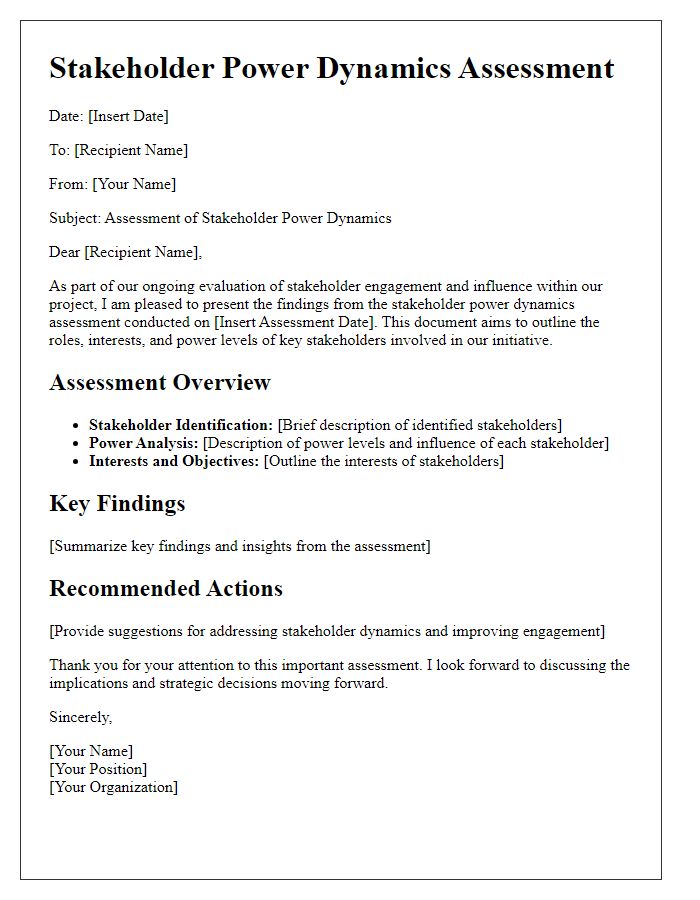
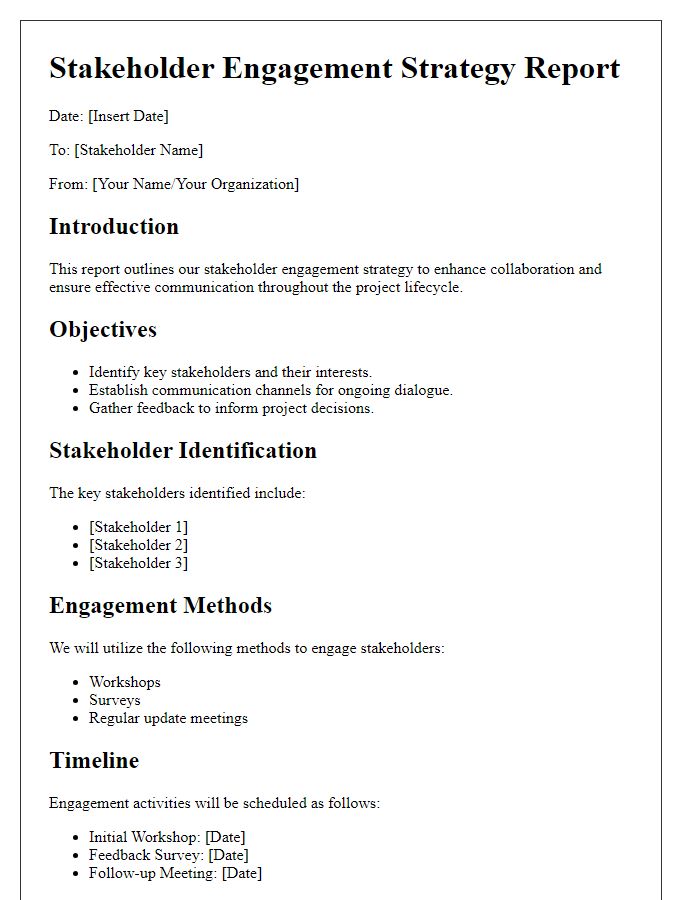
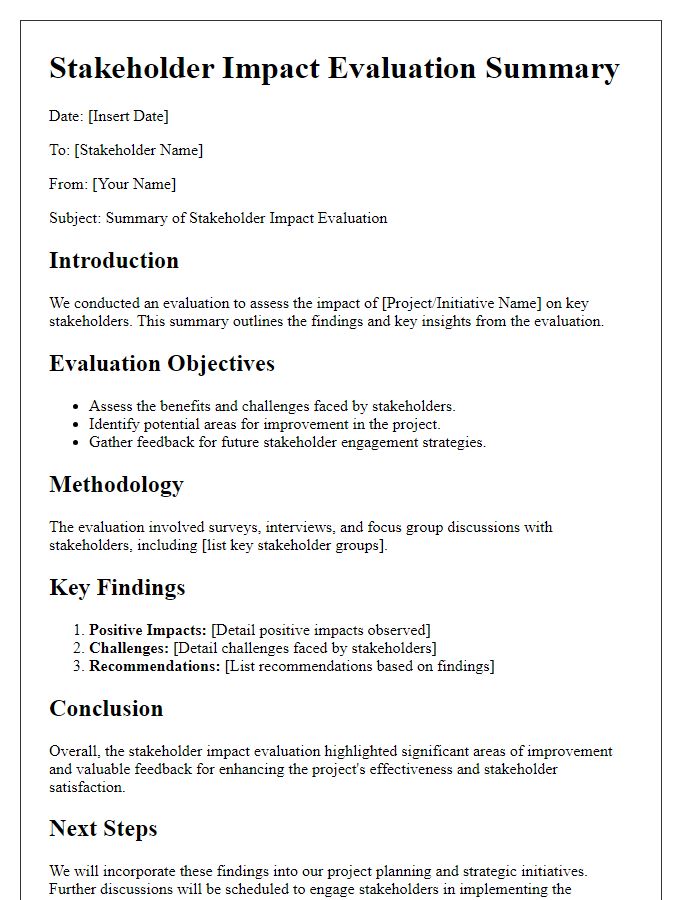
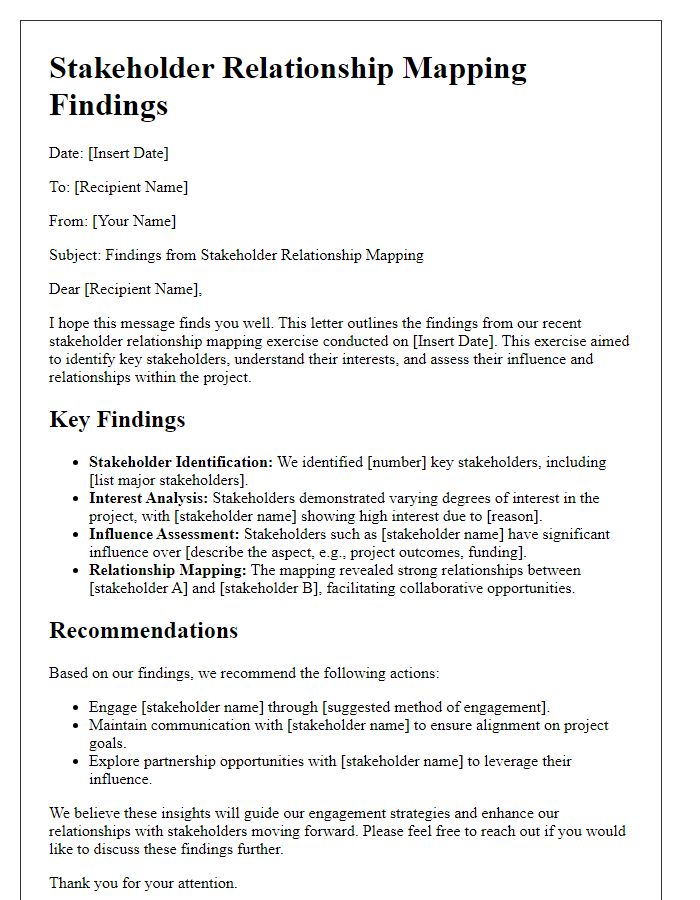
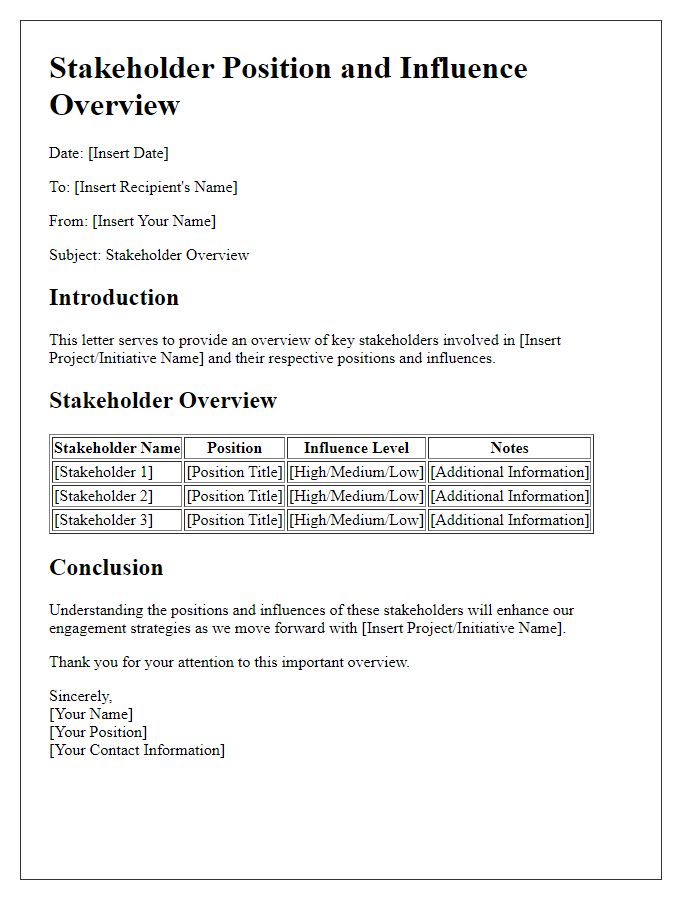
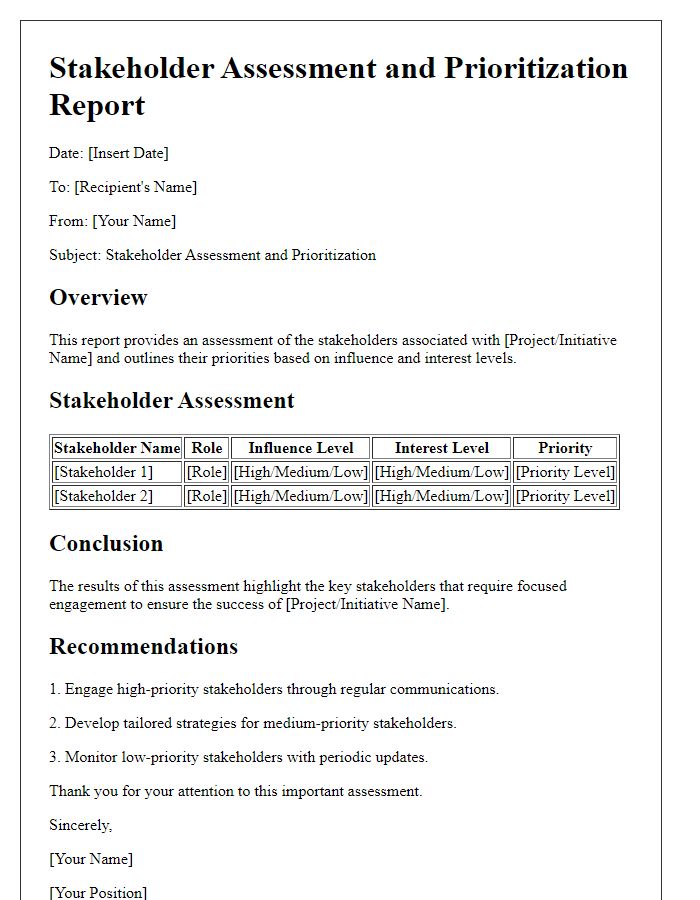
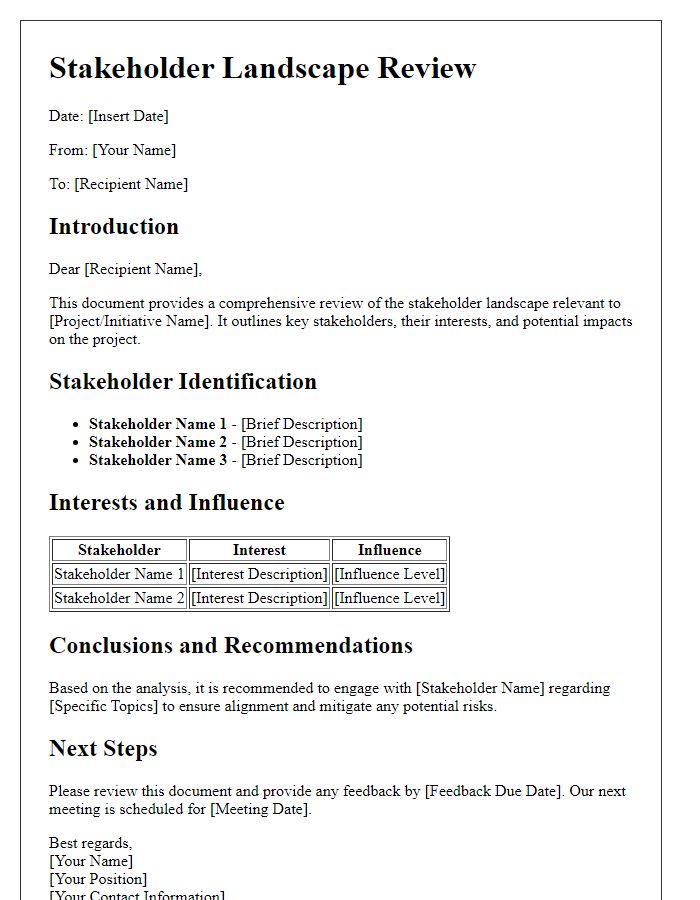
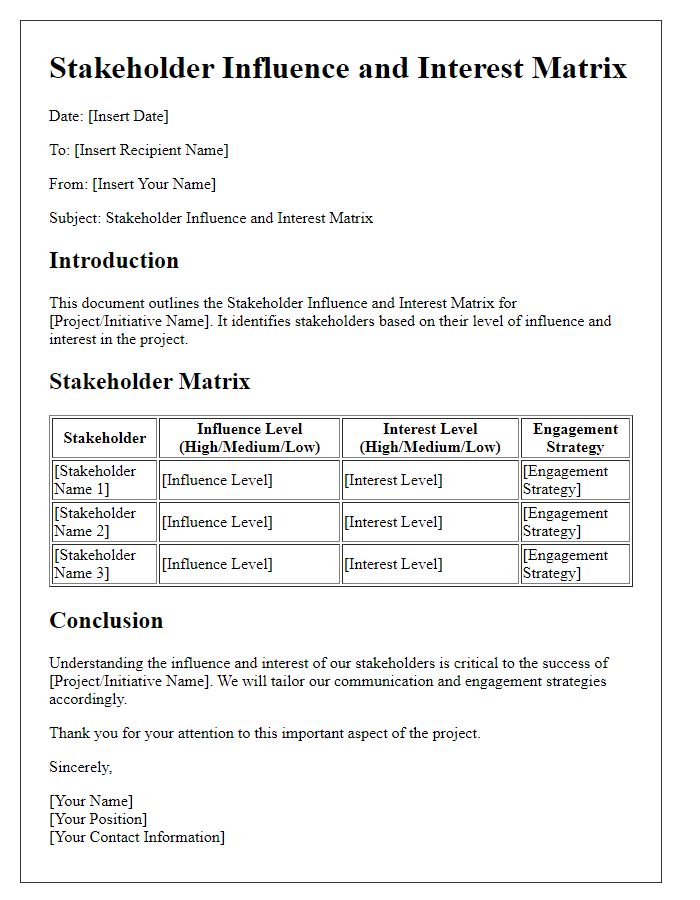
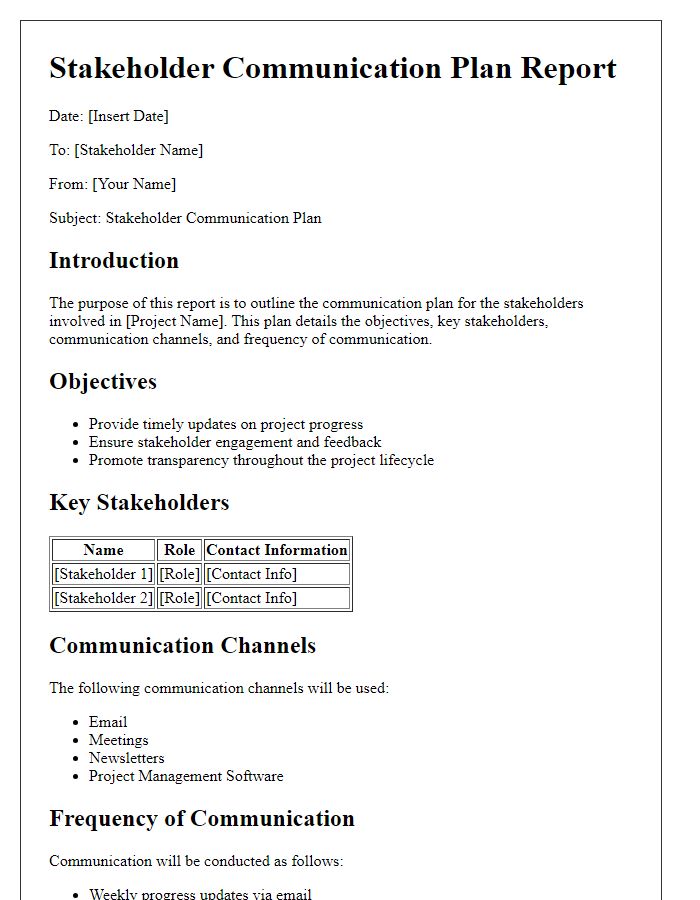


Comments